USA - FCC Approval
FCC Certification
Understanding FCC Approval for Electronic Devices in the U.S.
If you’re manufacturing or supplying electronic products to the U.S. market, it’s essential to ensure your devices meet the standards set by the Federal Communications Commission (FCC). These regulations are designed to manage and limit radio frequency (RF) emissions, ensuring devices do not interfere with other wireless communications or electronic equipment
Why FCC Approval Is Necessary
The FCC oversees the compliance of electronic products that either emit or are susceptible to radio frequency energy. Their goal is to prevent RF interference and protect users, communications infrastructure, and other electronics. Depending on how and where a device operates, different requirements apply
Device Categories: Class A vs. Class B
Electronic products are categorized based on their intended use environment:
- Class A: Products used in commercial or industrial settings
- Class B: Products intended for residential environments
Class B devices must meet stricter limits since residential areas are more sensitive to interference from multiple consumer electronics operating close together.
Two Primary Approval Pathways
Devices are evaluated and approved through one of two main routes, depending on whether or not they transmit RF signals intentionally:
- Certification – Required for devices that deliberately emit radio signals (e.g., Bluetooth modules, Wi-Fi routers, RF remote controls).
- Supplier’s Declaration of Conformity (SDoC) – Applies to devices that emit RF energy unintentionally, such as computer peripherals, AV gear, or switching power supplies.
Some unintentional radiators can also pursue certification, but it is not mandatory if SDoC requirements are met.
Key Technical Regulations
The FCC’s regulatory framework categorizes electronic devices based on their electromagnetic behavior and communication function. The following parts of Title 47 of the Code of Federal Regulations (CFR) are particularly relevant for manufacturers and importers seeking authorization:
Part 15 – Subpart B: Unintentional Radiators
This section governs devices that generate RF energy internally but do not deliberately transmit it. Examples include computing equipment, digital displays, switching power supplies, and AV devices.
Scope: Applies to digital and electronic products that emit RF energy incidentally through internal oscillators or high-speed circuitry.
Compliance Requirements: Specifies the limits for radiated and conducted emissions based on device class (Class A or Class B) and mandates testing under ANSI C63.4 standards.
Authorization Path: Typically via Supplier’s Declaration of Conformity (SDoC), though certification is also permitted.
Part 15 – Subpart C: Intentional Radiators
This subpart covers products that are designed to intentionally emit RF signals for wireless communication or control functions.
Scope: Includes technologies such as Wi-Fi (2.4 GHz / 5 GHz), Bluetooth, Zigbee, LoRa, RFID, and short-range transmitters.
Technical Parameters: Regulates critical parameters such as transmit frequency range, output power, bandwidth, modulation schemes, and antenna specifications.
Authorization Path: Mandatory Certification through an FCC-recognized Telecommunications Certification Body (TCB). Testing must be conducted at an FCC-recognized or ILAC-accredited laboratory.
Part 18 – Industrial, Scientific, and Medical (ISM) Equipment
Applies to non-communication devices that emit RF energy as part of their core function, not for signal transmission.
Scope: Includes devices such as microwave ovens, RF welders, wireless chargers, and induction heating equipment.
Interference Control: While ISM devices operate on designated frequencies (e.g., 13.56 MHz, 2.45 GHz), they must not cause harmful interference to licensed radio communication services.
Authorization Path: Depending on the device type and operational characteristics, compliance may be demonstrated via SDoC or Certification.
Part 68 – Terminal Equipment
This section governs Telephone Terminal Equipment (TTE) that connects directly to the Public Switched Telephone Network (PSTN).
Scope: Includes modems, fax machines, analog telephony adapters (ATAs), and other CPE (Customer Premises Equipment).
Objective: Ensures such devices do not harm the network infrastructure or degrade service quality.
Compliance Path: Authorization can be obtained either via TCB Certification or SDoC, subject to conformance with interface protection requirements and applicable technical reference standards (e.g., TIA-968-B).
FCC Labelling Requirements: Technical and Regulatory Obligations
All electronic and RF-emitting devices approved for distribution or sale in the United States under FCC rules must adhere to mandatory labeling requirements. These labeling obligations serve a dual purpose: to inform end users and regulatory bodies of the device’s compliance status, and to ensure traceability in the event of market surveillance or enforcement action.
The type of label, its content, and its placement depend on the authorization route — whether the device is certified via a Telecommunications Certification Body (TCB) or authorized under the Supplier’s Declaration of Conformity (SDoC) procedure.
1. Labeling for Certified Devices (Intentional Radiators, Part 15C)
Devices that are certified under FCC Part 2 and applicable subparts (e.g., Part 15C for intentional radiators) must display the FCC Identifier (FCC ID) on the product or its packaging.
FCC ID Format: A two-part identifier comprising the Grantee Code (3 or 5 characters assigned by the FCC) and the Product Code (assigned by the applicant).
Example:
FCC ID: XYZ123456
Label Content Requirements:
The full FCC ID
Any additional cautionary or compliance statements required by the applicable rule part
If the device is subject to RF exposure limits (e.g., MPE or SAR), labeling must include reference to compliance with those requirements
Physical Placement:
The label must be conspicuously placed on the device where it is readily visible to the user
It must be permanently affixed and resistant to environmental degradation during the intended product lifecycle (e.g., exposure to heat, moisture, handling)
Engraving, printing, or durable adhesive labels are acceptable
2. Labeling for SDoC Devices (Unintentional Radiators, Part 15B)
For devices authorized under Supplier’s Declaration of Conformity (SDoC), the labeling obligation is simpler but still legally binding.
Required Compliance Statement:
Devices must carry the following or similar text:
“This device complies with part 15 of the FCC Rules. Operation is subject to the following two conditions:
(1) This device may not cause harmful interference, and
(2) this device must accept any interference received, including interference that may cause undesired operation.”
Company Identification:
The name or logo of the responsible party (U.S.-based manufacturer/importer) must appear on the device or in the product literature
Location of Label:
Can be affixed to the product, included in user manuals, or presented through electronic labeling under specific conditions
3. Electronic Labeling (eLabeling)
In accordance with FCC Public Notices and Knowledge Database (KDB) publications, electronic labeling is permitted for devices with integrated displays (e.g., smartphones, tablets, embedded systems).
Conditions for eLabeling:
The device must have a built-in screen capable of clearly displaying the required FCC ID or compliance statement
The label must be accessible without requiring passwords or special access codes
Instructions to access the e-label must be provided in the user manual or quick-start guide
No software or firmware updates may remove or alter the label display capability
4. Additional Labelling Considerations
User-Replaceable Modules: If a certified RF module is installed by the end user, labeling on the host product must reference the module’s FCC ID.
Small Devices: If the device is too small to bear the full label, abbreviated labels may be permitted provided full compliance details are available in the user manual or via electronic means.
Temporary Labels: Permissible for prototype or pre-production samples used for evaluation or demonstration, but must be replaced with permanent labeling before commercial distribution.
Related Services
Click here to know about the Approval Process for Australia
Click here to know about the Approval Process for the Canadian Market
Click here to know about the CCC certifications
Click here to know everything about European Type Approval
Click here to know everything about Type Approval for Fiji
Click here to know everything about Type Approval for Hong Kong
Click here to know everything about India Approvals
Click here to know everything about Type Approval for Japan
Click here to know everything about Type Approval for Malaysia
Click here to know everything about Type Approval for Saudi Arabia
Click here to know everything about ICASA for South Africa
Click here to know everything about Taiwan Type Approval
Click here to know everything about Type Approval for USA
Detailed Information
Local Representation Required | Only for SDoC (Supplier’s Declaration of Conformity). |
In Country Testing Required | No |
Authority | Federal Communications Commission ( fFCC) |
Sample Requirements | No |
Country Specific Mark | Required. The label must include: The full FCC ID (e.g., FCC ID: ABC123456) , Any required cautionary statements (e.g., RF exposure) |
Obligation | Mandatory |
Company Strengths at a glance
Why C-PRAV?
We offer a seamless certification process by managing all aspects, from documentation to testing, ensuring compliance with FCC regulations.
At C-PRAV, we ensure accuracy and thorough compliance management, minimizing risks of delays or rejections. Our tailored solutions cater to manufacturers, importers, and distributors, offering personalized support to navigate complex regulatory landscapes.
Additionally, we provide long-term support, keeping your products compliant as regulations evolve. With us the approval process becomes efficient and hassle-free, allowing you to focus on business growth in USA and beyond.

